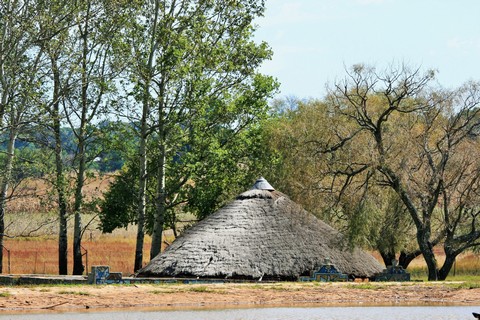The Venda tribe is concentrated mainly in the Limpopo Province (northern Transvaal) and it is believed that they are one of the last tribes to emigrate into South Africa from the area of the Great Lakes of Central Africa, settling in the area of the Soutpanzberg mountains and still today the ruins of their first capital D’zata can be seen.
The history of the Venda tribe starts from around the 9th century with the Mapungubwe Kingdom with King Shiryadenga being the first Venda King. The capital of this kingdom which was known as Mapungubwe is now a national park and a UNESCO World Heritage Site. In the period from 800AD, the emergence of the Mapungubwe Kingdom began and stretched from the Soutpansberg in what is now Limpopo Province (Northern Transvaal) as far north as the Matopos in Southern Zimbabwe. From 1240 onwards, the decline of the Mapungobwe Kingdom began and was overtaken by the powerful traders of the Kingdom of Great Zimbabwe.
Despite this shift in power the Population of the Venda Tribe south of the Limpopo did not end and a Venda style of pottery began to develop. There are, today, stone walled ruins to be found in North and North Eastern South Africa but even though they are not comparable to those found at Great Zimbabwe, there seems to be a definite link.
The Vendas, like most other African tribes, practice both cattle-rearing and agriculture and are skilled in the smelting of metals from which they make implements. Long before the establishment of the European settlers mines at Messina, the tribe exploited the deposits there. They are also traders and hunters.
The crocodile is regarded as sacred by the Venda people and they believe in a monotheistic deity that they call “Raluvhimba”. They practice an elaborate ritual of rain making and have some fascinating ritual dances.


